
Aroab
Visit the guide
Bethanie
Visit the guide
Eenhana
Visit the guide
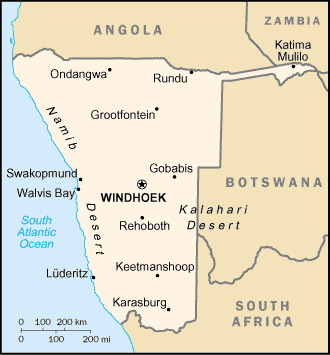
Gobabis
Visit the guide

Grootfontein
Visit the guide
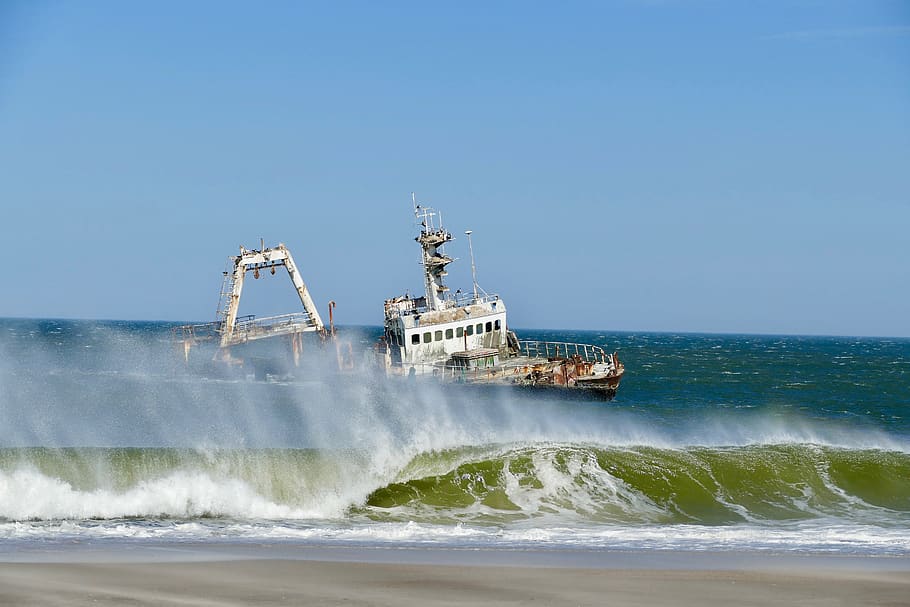
Henties Bay
Visit the guide

Karasburg
Visit the guide

Katima Mulilo
Visit the guide

Keetmanshoop
Visit the guide
Khorixas
Visit the guide

Lüderitz
Visit the guide

Mariental
Visit the guide
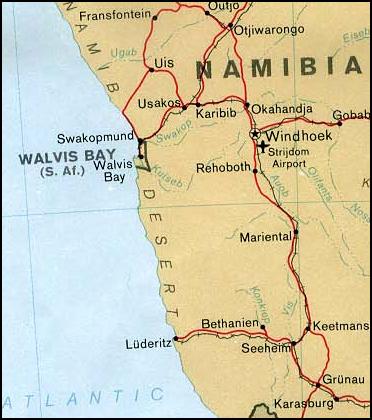
Okahandja
Visit the guide

Omaruru
Visit the guide
Omuthiya
Visit the guide
Ongwediva
Visit the guide
Oshakati
Visit the guide

Otavi
Visit the guide

Otjiwarongo
Visit the guide

Outapi
Visit the guide
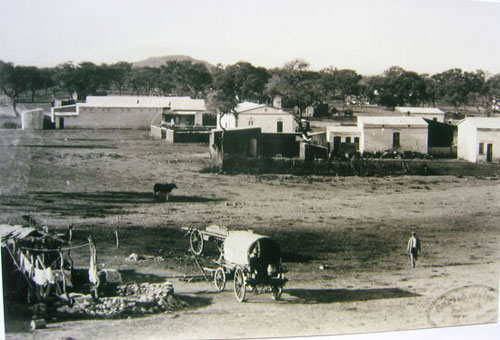
Rehoboth
Visit the guide
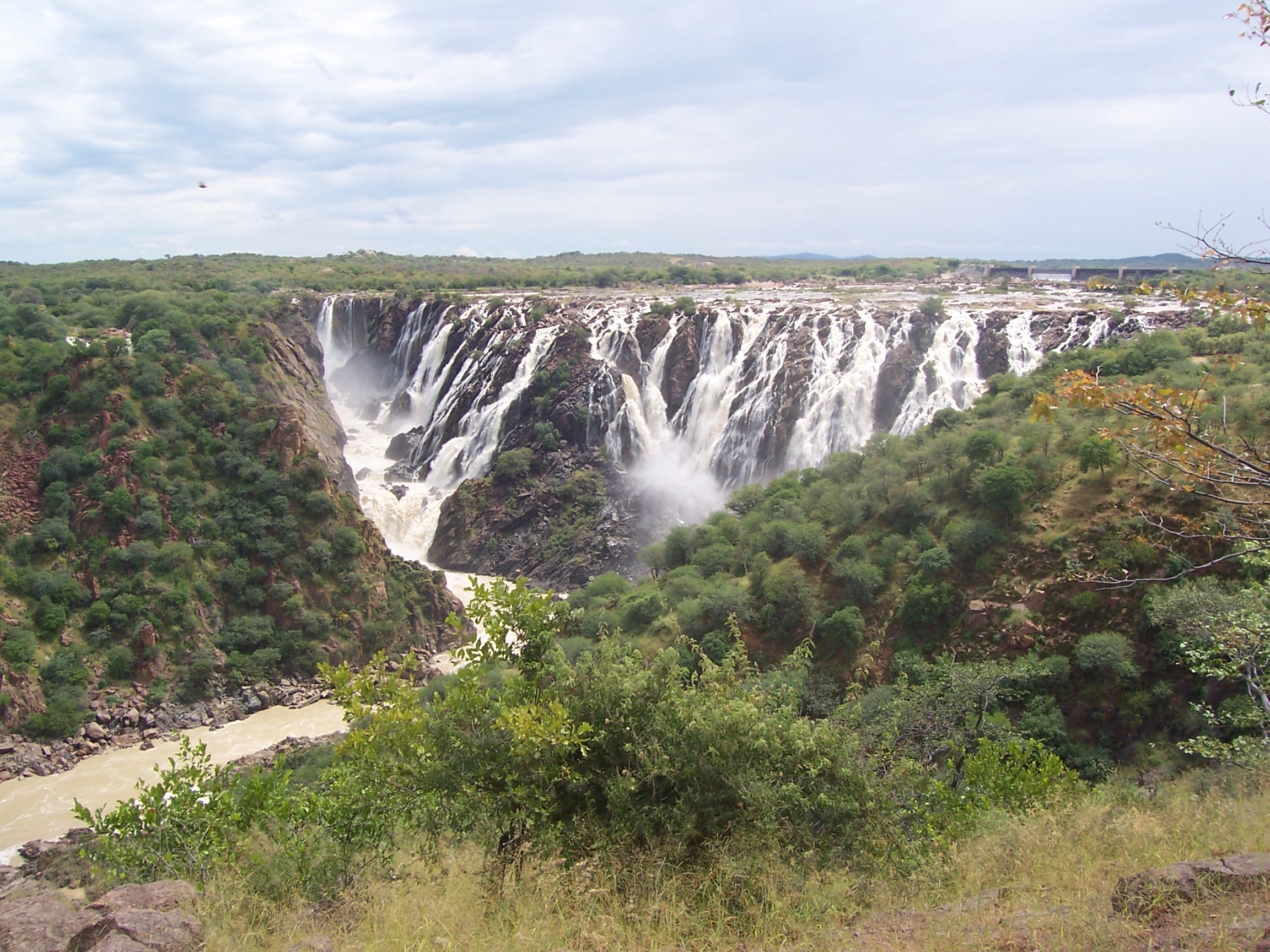
Ruacana
Visit the guide

Rundu
Visit the guide

Swakopmund
Visit the guide

Tsumeb
Visit the guide

Usakos
Visit the guide

Walvis Bay
Visit the guide

Warmbad
Visit the guide

Windhoek
Visit the guide
festivites
Here are some of the major festivities and holidays in Namibia:
1. Independence Day (March 21st): This day marks Namibia's independence from South Africa in 1990. It is celebrated with parades, speeches, cultural performances, and various social events throughout the country.
2. Herero Day (August 23rd): This day commemorates the Herero people's resistance against German colonization in the early 1900s. It is celebrated with traditional dances, songs, and prayers in areas where the Herero people live.
3. Ongwediva Annual Trade Fair (August): This event is held annually in the town of Ongwediva and is one of the largest trade fairs in Namibia. It features exhibitions, entertainment, and cultural performances from all over the country.
4. Kalahari Desert Festival (August/September): This festival takes place in the village of Tsumkwe, located in the Kalahari Desert. It celebrates the culture and traditions of the San people, who are indigenous to the region. The festival includes music, dance, storytelling, and traditional games.
5. Christmas (December 25th): As in many other countries, Christmas is a major holiday in Namibia. It is celebrated with family gatherings, church services, gift-giving, and festive meals.
6. New Year's Day (January 1st): This is a public holiday in Namibia, and it is generally celebrated with parties, fireworks, and other festive activities.
It should be noted that there are many other cultural and religious festivals celebrated by different communities across Namibia, such as Eid al-Fitr, Easter, and the annual maize harvest festival of the Owambo people.
seasons
Namibia generally has two tourist seasons: the peak season and the low season.
1. Peak Season:
- Dates: July to October
- Recommendations: This is the best time to visit Namibia as it's dry and sunny with clear blue skies, making it ideal for wildlife viewing and outdoor activities. However, it's also the busiest and most expensive time, so book accommodations and tours in advance.
2. Low Season:
- Dates: November to June
- Recommendations: This season is characterized by hot temperatures and occasional rain showers. It's less busy and more affordable than the peak season, making it a good time to travel on a budget. Wildlife viewing is still possible during this time, but the scenery may not be as lush as during the peak season.
visa
As an AI language model, I do not have real-time access to current information on visa rules, regulations and fee structures. Visa requirements and costs can also vary based on factors such as the purpose of travel, length of stay, and the individual circumstances of the applicant. It is recommended to consult the official website of the Namibian embassy or consulate in your country for the most up-to-date information on visa requirements and related fees.
souvenirs
Here are some popular souvenirs to buy in Namibia, along with their average prices and where to find them:
1. Himba jewelry - handcrafted bead necklaces and bracelets made by the Himba people. Average price: NAD 50-300. Where to buy: Himba villages or local markets.
2. African drums - traditional handmade wooden drums used for music and dance performances. Average price: NAD 500-1000. Where to buy: Craft markets in Windhoek or Swakopmund.
3. Makalani palm baskets - woven baskets made from the leaves of the Makalani palm. Average price: NAD 150-400. Where to buy: Craft markets in Windhoek or Swakopmund.
4. San rock art - replica paintings and carvings of ancient San rock art. Average price: NAD 200-1000. Where to buy: Arts and crafts shops in Windhoek or galleries in Swakopmund.
5. Oryx leather products - belts, wallets, and bags made from the hides of the Oryx antelope. Average price: NAD 300-800. Where to buy: Leather shops in Windhoek or Swakopmund.
6. Gemsbok horn products - carved ornaments and utensils made from the horns of the Gemsbok antelope. Average price: NAD 150-500. Where to buy: Craft markets in Windhoek or Swakopmund.
Please note that these prices are estimates and may vary depending on the location and vendor.
If you have 1 week
Oh, Namibia! What a gem of a country with so much to offer. Here's a one week itinerary that will surely give you a taste of everything the country has to offer.
Day 1: Start your trip off by visiting the world-renowned Etosha National Park. Spend the day on a guided safari tour where you'll get to see African elephants, lions, leopards, and rhinoceroses in their natural habitats.
Day 2: Head towards Damaraland to visit Spitzkoppe, also known as the "Matterhorn of Namibia." This majestic granite peak offers breathtaking views over the surrounding landscape.
Day 3: Experience the thrill of sandboarding on the massive dunes of Sossusvlei in the Namib Desert. These dunes are some of the tallest in the world, and the view from the top is absolutely stunning.
Day 4: Visit the coastal town of Swakopmund and take part in some adventure activities such as quad biking, sand surfing or skydiving. You can also explore the charming colonial architecture and unique culture of this German-influenced city.
Day 5: Drive to the Fish River Canyon, the largest canyon in Africa and the second largest in the world. Take in the vast open vistas and enjoy the serenity of the area.
Day 6: Visit the historical village of Kolmanskop, an abandoned diamond mining town that was once home to some of the richest people in the world. The eerie atmosphere and unique history make it a must-visit destination.
Day 7: End your trip with a cultural experience by visiting the Himba tribe, one of the oldest and most traditional tribes in Namibia. Learn about their customs, beliefs, and way of life.
These are just a few of the many amazing places to visit in Namibia. Each destination is sure to leave you in awe and provide an unforgettable experience. Safe travels!
If you have 2 weeks
Hello! It's awesome to hear that you're in Namibia. You're in for a treat because there are many incredible places to visit in your country. Here is a two-week itinerary that I recommend:
Week 1:
Day 1-2: Start your adventure in the capital city of Windhoek, where you can explore the local markets and enjoy traditional Namibian cuisine. Be sure to visit the National Museum of Namibia and learn about the country's rich history.
Day 3-4: Travel to the Etosha National Park, which is home to a wide variety of wildlife, including elephants, lions, and rhinos. Take an open vehicle safari trip to see the animals up close.
Day 5-7: Head over to Swakopmund, a quaint coastal town with German influences. There you can go sandboarding on the dunes, take a dolphin or seal tour, or go skydiving for an adrenaline rush.
Week 2:
Day 8-9: After a relaxing weekend, travel to Damaraland, where you can see the ancient rock art at Twyfelfontein and explore the beautiful landscapes.
Day 10-11: Go on a safari tour at the Skeleton Coast, which features dramatic coastline, desert-adapted wildlife, and rugged mountain ranges.
Day 12-14: Lastly, finish off your journey at Sossusvlei, a breathtaking region known for its towering red sand dunes. Climb the famous Big Daddy dune for some unforgettable views of the desert landscape.
This itinerary includes a mix of cultural experiences, adrenaline-fueled activities, and natural wonders. Each location has something unique to offer and will provide you with an unforgettable experience. Safe travels, and enjoy your time in Namibia!
Culture
The most popular sport in Namibia is association football. The Namibia national football team qualified for the 1998, 2008 and 2019 editions of the Africa Cup of Nations, but has yet to qualify for the World Cup.
The most successful national team is the Namibian rugby team, having competed in six separate World Cups. Namibia were participants in the 1999, 2003, 2007, 2011, 2015 and 2019 Rugby World Cups. Cricket is also popular, with the national side having qualified for 2003 Cricket World Cup, 2021 ICC T20 World Cup and 2022 ICC Men's T20 World Cup. In December 2017, Namibia Cricket reached the final of the Cricket South Africa (CSA) Provincial One Day Challenge for the first time. In February 2018 Namibia hosted the ICC World Cricket League Division 2 with Namibia, Kenya, UAE, Nepal, Canada and Oman to compete for the final two ICC Cricket World Cup Qualifier positions in Zimbabwe. Namibia also qualified the qualifiers of ICC T20 World Cup 2021 and entered the super 12 club.
The most famous athlete from Namibia is Frankie Fredericks, sprinter in the 100 and 200 m events. He won four Olympic silver medals (1992, 1996) and also has medals from several World Athletics Championships. Golfer Trevor Dodds won the Greater Greensboro Open in 1998, one of 15 tournaments in his career. He achieved a career-high world ranking of 78th in 1998. Professional cyclist and Namibian Road Race champion Dan Craven represented Namibia at the 2016 Summer Olympics in both the road race and individual time trial. Boxer Julius Indongo is the unified WBA, IBF, and IBO world champion in the Light welterweight division. Another famous athlete from Namibia is ex-professional rugby player Jacques Burger. Burger played for Saracens and Aurillac in Europe, as well as gaining 41 caps for the national team.
Although Namibia's population is fairly small, the country has a diverse choice of media; two TV stations, 19 radio stations (without counting community stations), 5 daily newspapers, several weeklies and special publications compete for the attention of the audience. Additionally, a mentionable amount of foreign media, especially South African, is available. Online media are mostly based on print publication contents. Namibia has a state-owned Press Agency, called NAMPA. Overall c. 300 journalists work in the country.
The first newspaper in Namibia was the German-language Windhoeker Anzeiger, founded 1898. During German rule, the newspapers mainly reflected the living reality and the view of the white German-speaking minority. The black majority was ignored or depicted as a threat. During South African rule, the white bias continued, with mentionable influence of the Pretoria government on the South West African media system. Independent newspapers were seen as a menace to the existing order, and critical journalists were often threatened.
Current daily newspapers are the private publications The Namibian (English and other languages), Die Republikein (Afrikaans), Allgemeine Zeitung (German) and Namibian Sun (English) as well as the state-owned New Era (predominantly English). Except for the largest newspaper, The Namibian, which is owned by a trust, the other mentioned private newspapers are part of Democratic Media Holdings. Other mentionable newspapers are the tabloid Informanté owned by TrustCo, the weekly Windhoek Observer, the weekly Namibia Economist, as well as the regional Namib Times. Current affairs magazines include Insight Namibia, Vision2030 Focus magazine and Prime FOCUS. The Sister Namibia magazine stands out as the longest running NGO magazine in Namibia, while Namibia Sport is the only national sport magazine. Furthermore, the print market is complemented with party publications, student newspapers and PR publications.
Radio was introduced in 1969, TV in 1981. The broadcasting sector today is dominated by the state-run Namibian Broadcasting Corporation (NBC). The public broadcaster offers a TV station as well as a "National Radio" in English and nine language services in locally spoken languages. The nine private radio stations in the country are mainly English-language channels, except for Radio Omulunga (Oshiwambo) and Kosmos 94.1 (Afrikaans). Privately held One Africa TV has competed with NBC since the 2000s.
Compared to neighbouring countries, Namibia has a large degree of media freedom. Over the past years, the country usually ranked in the upper quarter of the Press Freedom Index of Reporters without Borders, reaching position 21 in 2010, being on par with Canada and the best-positioned African country. The African Media Barometer shows similarly positive results. However, as in other countries, there is still mentionable influence of representatives of state and economy on media in Namibia. In 2009, Namibia dropped to position 36 on the Press Freedom Index. In 2013, it was 19th, 22nd in 2014 and 23rd in 2019, meaning that it is currently the highest ranked African country in terms of press freedom.
Media and journalists in Namibia are represented by the Namibian chapter of the Media Institute of Southern Africa and the Editors' Forum of Namibia. An independent media ombudsman was appointed in 2009 to prevent a state-controlled media council.
Namibia has free education for both primary and secondary education levels. Grades 1–7 are primary level, grades 8–12 are secondary. In 1998, there were 400,325 Namibian students in primary school and 115,237 students in secondary schools. The pupil-teacher ratio in 1999 was estimated at 32:1, with about 8% of the GDP being spent on education. Curriculum development, educational research, and professional development of teachers is centrally organised by the National Institute for Educational Development (NIED) in Okahandja. Among sub-Saharan African countries, Namibia has one of the highest literacy rates. According to CIA World Factbook, as of 2018 91.5% of the population age 15 and over can read and write.
Most schools in Namibia are state-run, but there are some private schools, which are also part of the country's education system. There are four teacher training universities, three colleges of agriculture, a police training college, and three universities: University of Namibia (UNAM), International University of Management (IUM) and Namibia University of Science and Technology (NUST). Namibia was ranked 100th in the Global Innovation Index in 2021.
Religion
The Christian community makes up 80%–90% of the population of Namibia, with at least 75% being Protestant, of which at least 50% are Lutheran. Lutherans are the largest religious group, a legacy of the German and Finnish missionary work during the country's colonial times. 10%–20% of the population hold indigenous beliefs.
Missionary activities during the second half of the 19th century resulted in many Namibians converting to Christianity. Today most Christians are Lutheran, but there also are Roman Catholic, Methodist, Anglican, African Methodist Episcopal, Dutch Reformed, Latter-day Saints and Jehovah's Witnesses.
Islam in Namibia is subscribed to by about 9,000 people, many of them Nama. Namibia is home to a small Jewish community of about 100 people.
Demographics
Namibia has the second-lowest population density of any sovereign country, after Mongolia. In 2017 there were on average 3.08 people per km2. The total fertility rate in 2015 was 3.47 children per woman according to the UN.
The majority of the Namibian population is of Bantu-speaking origin—mostly of the Ovambo ethnicity, which forms about half of the population—residing mainly in the north of the country, although many are now resident in towns throughout Namibia. Other ethnic groups are the Herero and Himba people, who speak the related Herero language, and the Damara, who, like the Nama, speak Khoekhoe.
In addition to the Bantu majority, there are large groups of Khoisan (such as Nama and San), who are descendants of the original inhabitants of Southern Africa. The country also contains some descendants of refugees from Angola. There are also two smaller groups of people with mixed racial origins, called "Coloureds" and "Basters", who together make up 8.0% (with the Coloureds outnumbering the Basters two to one). There is a substantial Chinese minority in Namibia; it stood at 40,000 in 2006.
Whites (being mainly of Afrikaner, German, British and Portuguese origin) make up between 4.0 and 7.0% of the population. Although their proportion of the population decreased after independence due to emigration and lower birth rates, they still form the second-largest population of European ancestry, both in terms of percentage and actual numbers, in Sub-Saharan Africa (after South Africa). The majority of Namibian whites and nearly all those who are of mixed race speak Afrikaans and share similar origins, culture, and religion as the white and coloured populations of South Africa. A large minority of whites (around 30,000) trace their family origins back to the German settlers who colonised Namibia prior to the South African invasion during the First World War, and they maintain German cultural and educational institutions. Nearly all Portuguese settlers came to the country from the former Portuguese colony of Angola. The 1960 census reported 526,004 persons in what was then South West Africa, including 73,464 whites (14%).
Namibia conducts a census every ten years. After independence the first Population and Housing Census was carried out in 1991; further rounds followed in 2001, 2011, and 2023 (delayed two years due to the COVID-19 pandemic and financial constraints). The data collection method is to count every person resident in Namibia on the census reference night, wherever they happen to be. This is called the de facto method. For enumeration purposes the country is demarcated into 4,042 enumeration areas. These areas do not overlap with constituency boundaries to get reliable data for election purposes as well.
The 2011 Population and Housing Census counted 2,113,077 inhabitants. Between 2001 and 2011 the annual population growth was 1.4%, down from 2.6% in the previous ten-year period.
Namibia has 13 cities, governed by municipalities and 26 towns, governed by town councils. The capital Windhoek is by far the largest urban settlement in Namibia.
The Christian community makes up 80%–90% of the population of Namibia, with at least 75% being Protestant, of which at least 50% are Lutheran. Lutherans are the largest religious group, a legacy of the German and Finnish missionary work during the country's colonial times. 10%–20% of the population hold indigenous beliefs.
Missionary activities during the second half of the 19th century resulted in many Namibians converting to Christianity. Today most Christians are Lutheran, but there also are Roman Catholic, Methodist, Anglican, African Methodist Episcopal, Dutch Reformed, Latter-day Saints and Jehovah's Witnesses.
Islam in Namibia is subscribed to by about 9,000 people, many of them Nama. Namibia is home to a small Jewish community of about 100 people.
Up to 1990, English, German, and Afrikaans were official languages. Long before Namibia's independence from South Africa, SWAPO was of the opinion that the country should become officially monolingual, choosing this approach in contrast to that of its neighbour South Africa (which granted all 11 of its major languages official status), which it saw as "a deliberate policy of ethnolinguistic fragmentation." Consequently, SWAPO instituted English as Namibia's sole official language, though only about 3% of the population speaks it as a home language. Its implementation is focused on the civil service, education and the broadcasting system, especially the state broadcaster NBC. Some other languages have received semi-official recognition by being allowed as medium of instruction in primary schools. Private schools are expected to follow the same policy as state schools, and "English language" is a compulsory subject. Some critics argue that, as in other postcolonial African societies, the push for monolingual instruction and policy has resulted in a high rate of school drop-outs and of individuals whose academic competence in any language is low.
According to the 2011 census, the most common languages are Oshiwambo (the most spoken language for 49% of households), Khoekhoegowab (11.3%), Afrikaans (10.4%), RuKwangali (9%), and Otjiherero (9%). The most widely understood national language is Afrikaans, the country's lingua franca. Both Afrikaans and English are used primarily as a second language reserved for public communication. A complete list of languages according to the 2011 census is 48.9% Oshiwambo, 11.3% Khoekhoegowab, 10.4% Afrikaans, 8.6% Otjiherero, 8.5% RuKwangali, 4.8% siLozi, 3.4% English, 1.2% Other African languages, 0.9% German, 0.8% San, 0.7% Other European languages, 0.3% Setswana, and 0.1% Asian languages.
Most of the white population speaks either Afrikaans or German. More than a century after the end of the German colonial era, German continues to play a role as a commercial language. Afrikaans is spoken by 60% of the white community, German by 32%, English by 7% and Portuguese by 4–5%. Geographical proximity to Portuguese-speaking Angola explains the relatively high number of Portuguese speakers; in 2011 these were estimated to number 100,000.
Life expectancy at birth is estimated to be 64 years in 2017 – among the lowest in the world.
Namibia launched a National Health Extension Programme in 2012 deployment 1,800 (2015) of a total ceiling of 4,800 health extension workers trained for six months in community health activities including first aid, health promotion for disease prevention, nutritional assessment and counseling, water sanitation and hygiene practices, HIV testing and community-based antiretroviral treatment.
Namibia faces a non-communicable disease burden. The Demographic and Health Survey (2013) summarises findings on elevated blood pressure, hypertension, diabetes, and obesity:
* Among eligible respondents age 35–64, more than 4 in 10 women (44 percent) and men (45 percent) have elevated blood pressure or are currently taking medicine to lower their blood pressure.
* Forty-nine percent of women and 61 percent of men are not aware that they have elevated blood pressure.
* Forty-three percent of women and 34 percent of men with hypertension are taking medication for their condition.
* Only 29 percent of women and 20 percent of men with hypertension are taking medication and have their blood pressure under control.
* Six percent of women and 7 percent of men are diabetic; that is, they have elevated fasting plasma glucose values or report that they are taking diabetes medication. An additional 7 percent of women and 6 percent of men are prediabetic.
* Sixty-seven percent of women and 74 percent of men with diabetes are taking medication to lower their blood glucose.
* Women and men with a higher-than-normal body mass index (25.0 or higher) are more likely to have elevated blood pressure and elevated fasting blood glucose.
[[File:AIDS and HIV prevalence 2008.svg|thumb|upright=1.3|Estimated percentage of HIV among young adults (15–49) per country.
{{legend|#b00000| 15–50 }} ]] The HIV epidemic remains a public health issue in Namibia despite significant achievements made by the Ministry of Health and Social Services to expand HIV treatment services. In 2001, there were an estimated 210,000 people living with HIV/AIDS, and the estimated death toll in 2003 was 16,000. According to the 2011 UNAIDS Report, the epidemic in Namibia "appears to be leveling off." As the HIV/AIDS epidemic has reduced the working-aged population, the number of orphans has increased. It falls to the government to provide education, food, shelter and clothing for these orphans. A Demographic and Health Survey with an HIV biomarker was completed in 2013 and served as the fourth comprehensive, national-level population and health survey conducted in Namibia as part of the global Demographic and Health Surveys (DHS) programme. The DHS observed important characteristics associated to the HIV epidemic: As of 2015, the Ministry of Health and Social Services and UNAIDS produced a Progress Report in which UNAIDS projected HIV prevalence among 15–49-year-olds at 13.3% [12.2–14.5%] and an estimated 210,000 [200,000–230,000] living with HIV.
* Overall, 26 percent of men age 15–49 and 32 percent of those age 50–64 have been circumcised. HIV prevalence for men age 15–49 is lower among circumcised (8.0 percent) than among uncircumcised men (11.9 percent). The pattern of lower HIV prevalence among circumcised than uncircumcised men is observed across most background characteristics. For each age group, circumcised men have lower HIV prevalence than those who are not circumcised; the difference is especially pronounced for men age 35–39 and 45–49 (11.7 percentage points each). The difference in HIV prevalence between uncircumcised and circumcised men is larger among urban than rural men (5.2 percentage points versus 2.1 percentage points).
* HIV prevalence among respondents age 15–49 is 16.9 percent for women and 10.9 percent for men. HIV prevalence rates among women and men age 50–64 are similar (16.7 percent and 16.0 percent, respectively).
* HIV prevalence peaks in the 35–39 age group for both women and men (30.9 percent and 22.6 percent, respectively). It is lowest among respondents age 15–24 (2.5–6.4 percent for women and 2.0–3.4 percent for men).
* Among respondents age 15–49, HIV prevalence is highest for women and men in Zambezi (30.9 percent and 15.9 percent, respectively) and lowest for women in Omaheke (6.9 percent) and men in Ohangwena (6.6 percent).
* In 76.4 percent of the 1,007 cohabiting couples who were tested for HIV in the 2013 NDHS, both partners were HIV negative; in 10.1 percent of the couples, both partners were HIV positive; and 13.5 percent of the couples were discordant (that is, one partner was infected with HIV and the other was not).
The malaria problem seems to be compounded by the AIDS epidemic. Research has shown that in Namibia the risk of contracting malaria is 14.5% greater if a person is also infected with HIV. The risk of death from malaria is also raised by approximately 50% with a concurrent HIV infection. The country had only 598 physicians in 2002.
Cities:

